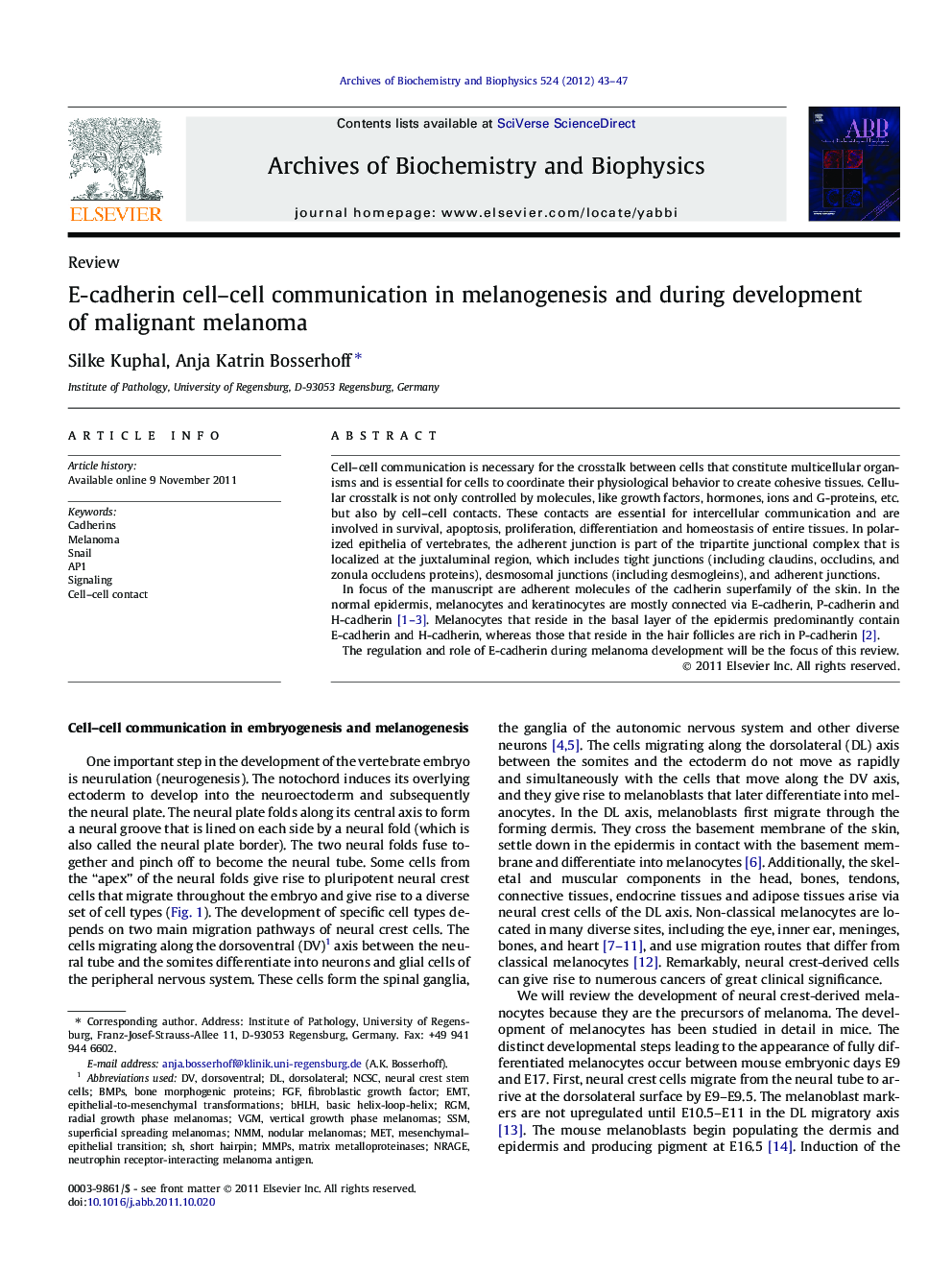| Article ID | Journal | Published Year | Pages | File Type |
|---|---|---|---|---|
| 1925524 | Archives of Biochemistry and Biophysics | 2012 | 5 Pages |
Cell–cell communication is necessary for the crosstalk between cells that constitute multicellular organisms and is essential for cells to coordinate their physiological behavior to create cohesive tissues. Cellular crosstalk is not only controlled by molecules, like growth factors, hormones, ions and G-proteins, etc. but also by cell–cell contacts. These contacts are essential for intercellular communication and are involved in survival, apoptosis, proliferation, differentiation and homeostasis of entire tissues. In polarized epithelia of vertebrates, the adherent junction is part of the tripartite junctional complex that is localized at the juxtaluminal region, which includes tight junctions (including claudins, occludins, and zonula occludens proteins), desmosomal junctions (including desmogleins), and adherent junctions.In focus of the manuscript are adherent molecules of the cadherin superfamily of the skin. In the normal epidermis, melanocytes and keratinocytes are mostly connected via E-cadherin, P-cadherin and H-cadherin [1], [2] and [3]. Melanocytes that reside in the basal layer of the epidermis predominantly contain E-cadherin and H-cadherin, whereas those that reside in the hair follicles are rich in P-cadherin [2].The regulation and role of E-cadherin during melanoma development will be the focus of this review.
► Normal epidermis is built up by melanocytes and keratinocytes which are interacting using E-, P-, and H-cadherin. ► The cadherin switch from E-cadherin to N-cadherin is promoting melanoma development. ► Cadherins not only control cell–cell-interaction but also have important signaling function.
